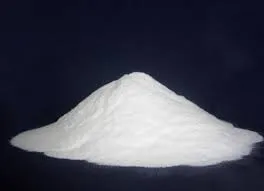The Versatility of Hydroxypropyl Methylcellulose (HPMC)
Hydroxypropyl methylcellulose (HPMC) is a versatile and widely used polymer that plays a crucial role in various industries, including pharmaceuticals, food, construction, and cosmetics. Known for its unique properties, HPMC has gained significant attention due to its ability to form gels, thicken, and stabilize a variety of formulations. With a chemical structure derived from cellulose, HPMC is a derivative of natural polymers, making it an appealing choice for many applications.
Chemical Composition and Properties
HPMC is produced through the controlled reaction of cellulose with propylene oxide and methyl chloride. This modification results in a compound that retains the beneficial features of cellulose while enhancing its solubility and functionality. The degree of substitution (DS) of hydroxypropyl and methyl groups determines the solubility and behavior of HPMC in different solvents. Generally, HPMC is soluble in both cold and hot water, which is a distinctive characteristic that sets it apart from other cellulose derivatives.
One of the standout properties of HPMC is its ability to form films and gels. This characteristic is particularly valuable in the pharmaceutical field, where it serves as a matrix for drug formulation and controlled release. The viscosity of HPMC solutions can be easily adjusted by altering the concentration, allowing for tailored formulations to meet specific needs.
Applications in Pharmaceuticals
In the pharmaceutical industry, HPMC is commonly used as a binder, thickening agent, and film-forming agent. It is a key component in the formulation of various dosage forms such as tablets, capsules, and liquids. Its excellent water retention properties help maintain moisture levels, thus enhancing the stability of drugs and their bioavailability. Furthermore, HPMC is used in sustained-release formulations, ensuring that active ingredients are released slowly over time, which minimizes potential side effects and increases patient adherence to dosage schedules.
Additionally, HPMC is utilized in ophthalmic preparations, where it acts as a lubricant and stabilizer in eye drops. Its biocompatibility and non-toxicity make it an ideal choice for sensitive applications such as ocular therapies.
hpmc cellulos

Role in Food Industry
The food industry also benefits significantly from HPMC's versatile properties. It is often used as a thickening agent, emulsifier, and stabilizer in various food products. HPMC enhances texture and mouthfeel, allowing manufacturers to improve product quality and consumer satisfaction. For example, HPMC is commonly found in gluten-free products, where it helps mimic the binding properties of gluten, providing structure and chewiness.
Moreover, HPMC is employed in dietary supplements, particularly in the development of capsules. Due to its plant-based origin, it serves as a suitable alternative to gelatin, catering to the growing demand for vegetarian and vegan products. This aspect of HPMC's application aligns with broader trends towards plant-based and sustainable food choices.
Construction and Cosmetic Uses
In construction, HPMC is used as an additive in cement and plaster formulations. It enhances workability, water retention, and adhesion properties, making it a valuable component in building materials. This application not only improves the quality of construction materials but also contributes to energy efficiency during the application process.
In cosmetics, HPMC serves as a thickening agent in various personal care products, including creams, lotions, and shampoos. Its ability to stabilize emulsions and enhance the texture of products makes it a popular choice among formulators looking to create high-quality formulations. The safety profile of HPMC further reinforces its suitability for use in cosmetics applied directly to the skin.
Conclusion
Hydroxypropyl methylcellulose is a remarkable polymer with diverse applications across multiple industries. Its unique properties, including solubility, viscosity modulation, and film-forming capabilities, make it invaluable in pharmaceuticals, food production, construction, and cosmetics. As demands for sustainable and plant-based ingredients grow, HPMC's role is likely to expand further, solidifying its position as a key player in the realm of polymer science. With ongoing research and innovation, the future of HPMC looks promising, and it will continue to shape various industries for years to come.
-
Rdp Powder: Key Considerations for Wholesalers in the Building Materials IndustryNewsJul.08,2025
-
Key Considerations for Wholesalers: Navigating the World of Hpmc - Based ProductsNewsJul.08,2025
-
Hpmc Detergent: Key Considerations for WholesalersNewsJul.08,2025
-
Key Considerations for Wholesalers: China Hpmc For Tile Adhesive, Coating Additives, Concrete Additives, and MoreNewsJul.08,2025
-
Crucial Considerations for Wholesalers: Navigating the World of Construction MaterialsNewsJul.08,2025
-
Key Considerations for Wholesalers Sourcing Additive For Cement, Additive For Concrete, Additive For Putty from Additive Manufacturer Shijiazhuang Gaocheng District Yongfeng Cellulose Co., Ltd.NewsJul.08,2025




